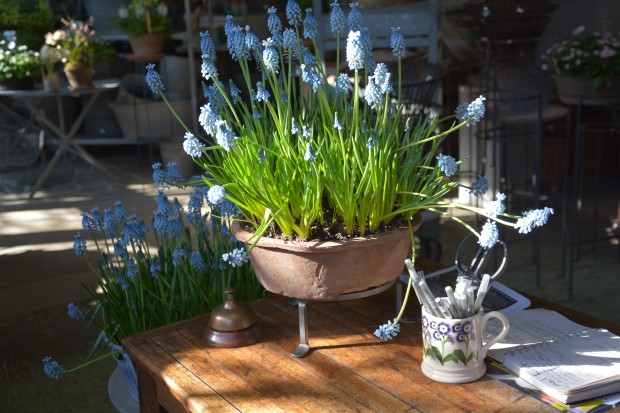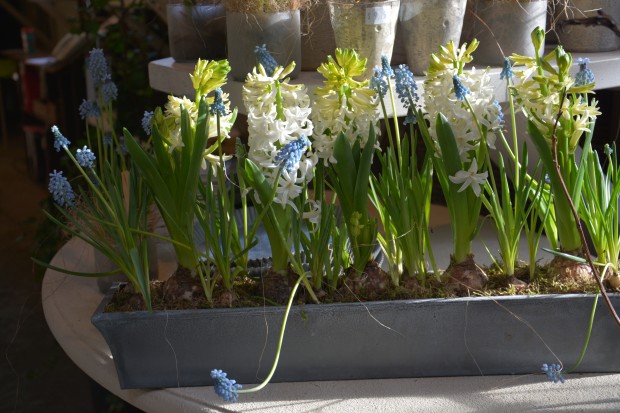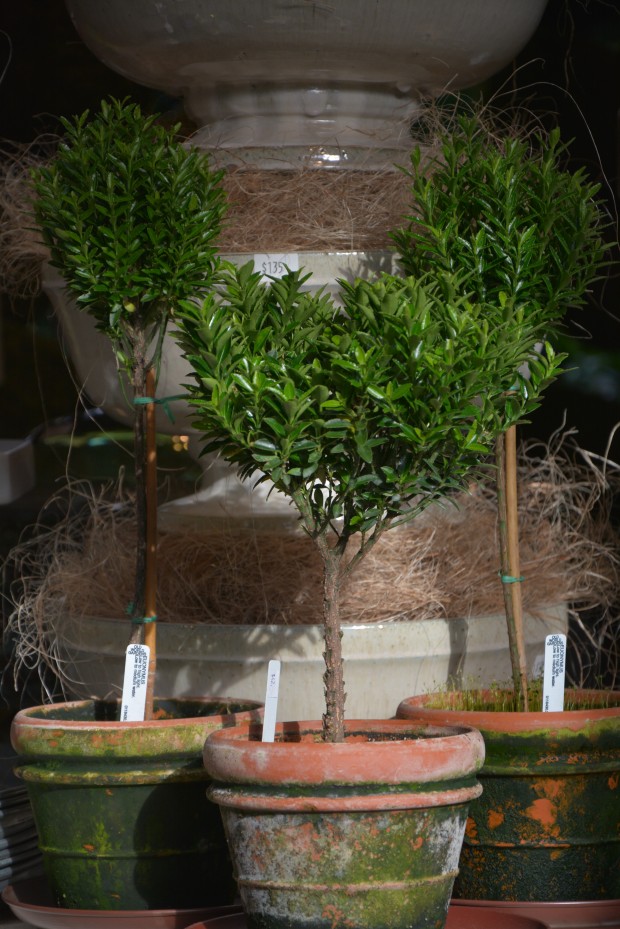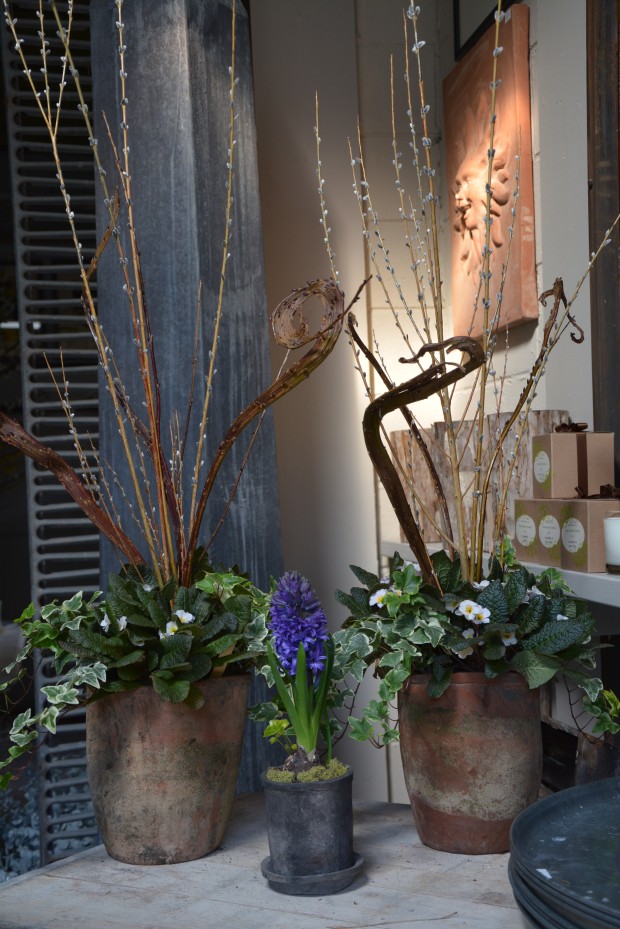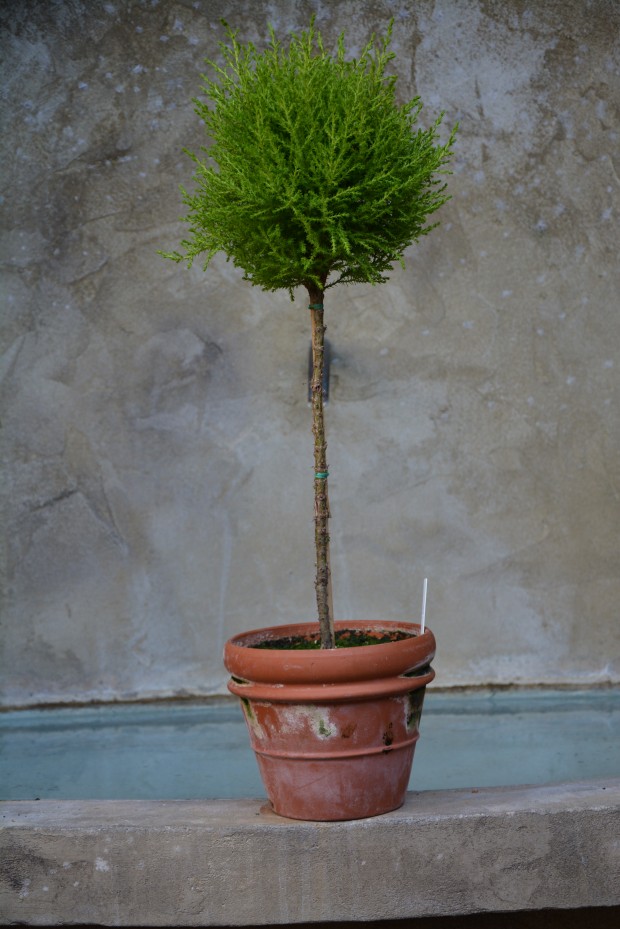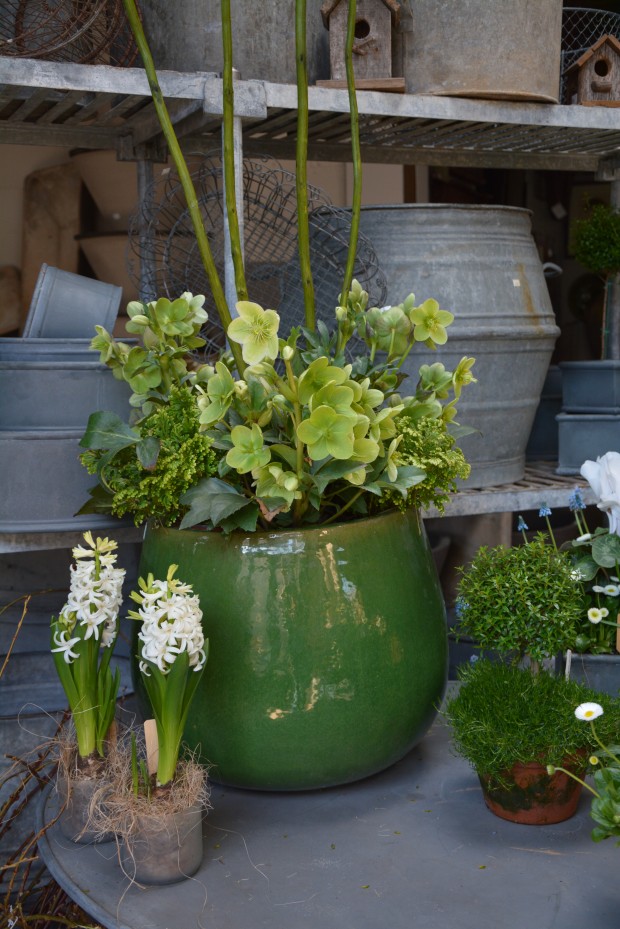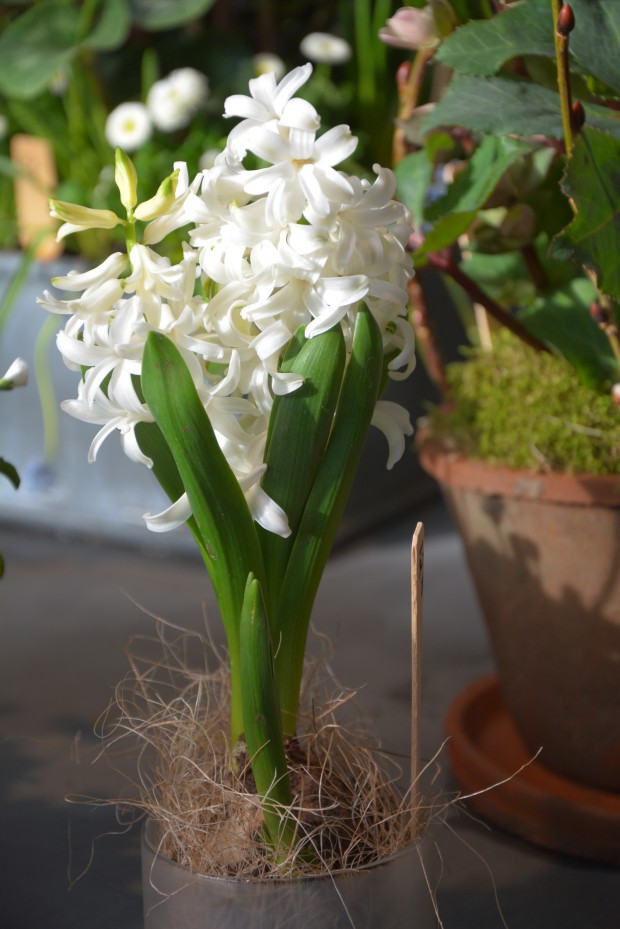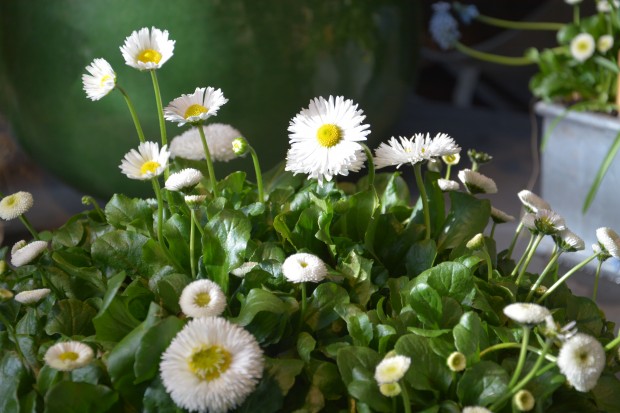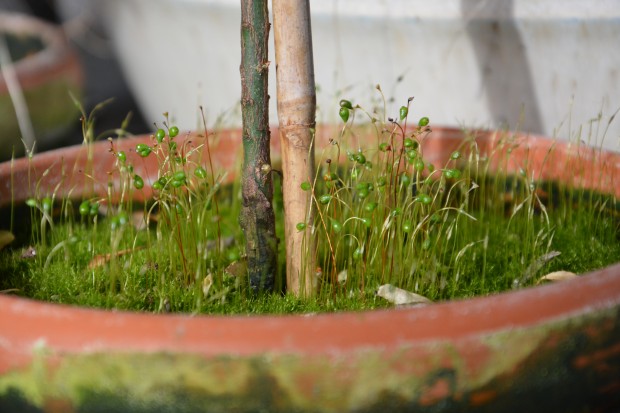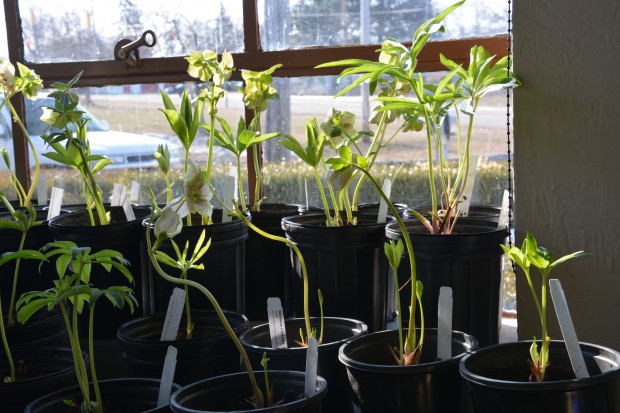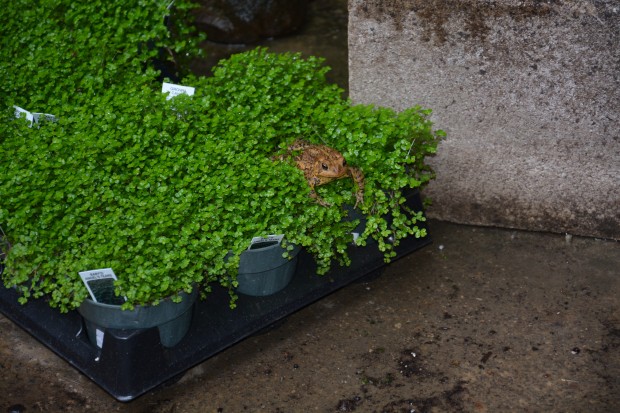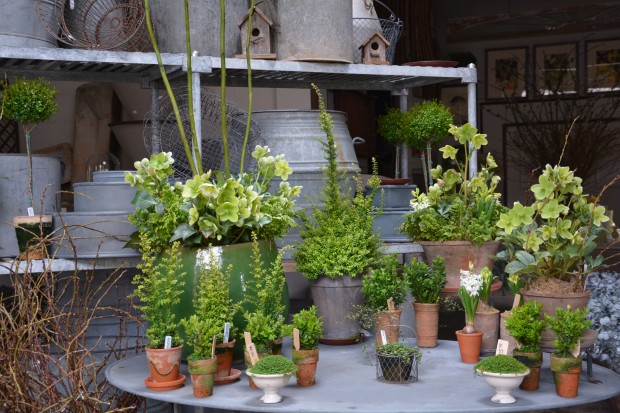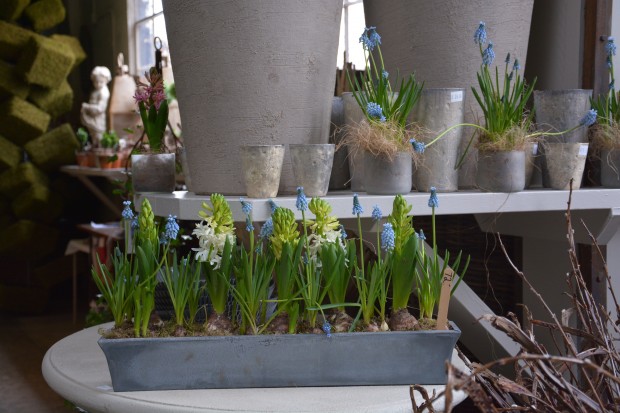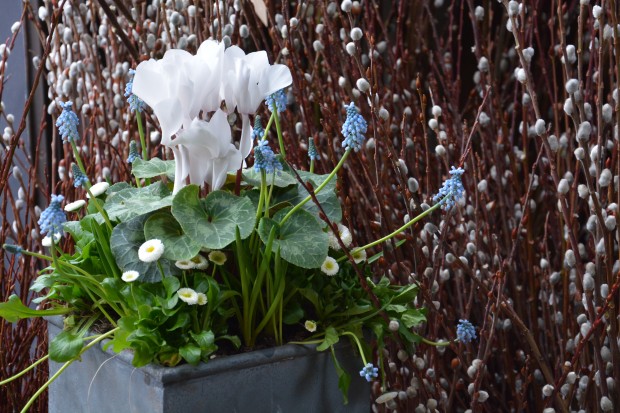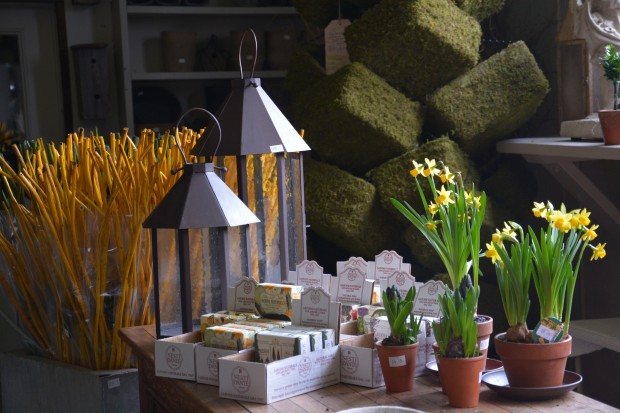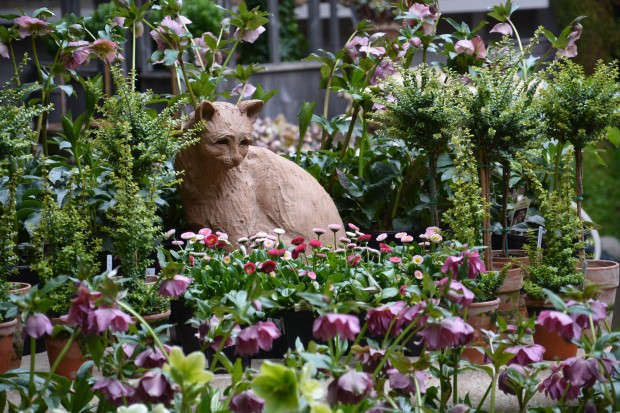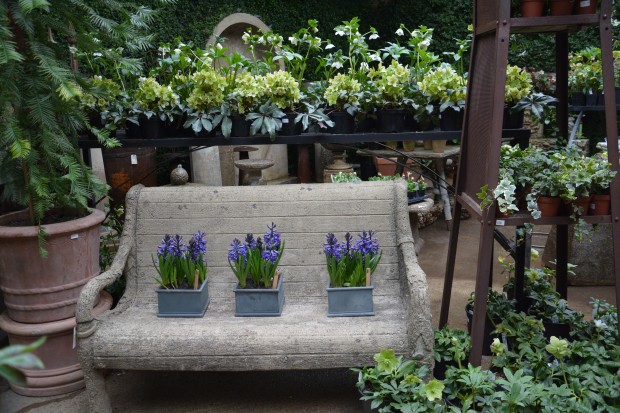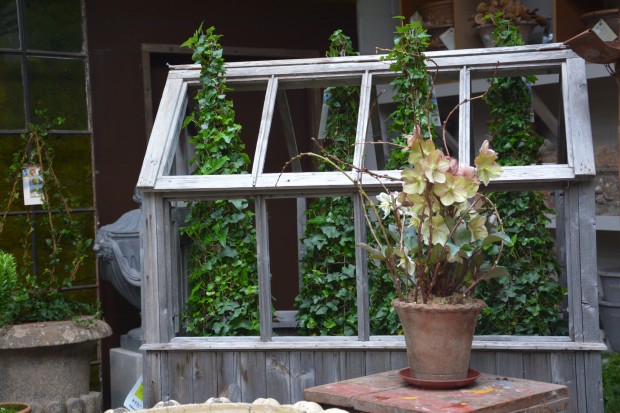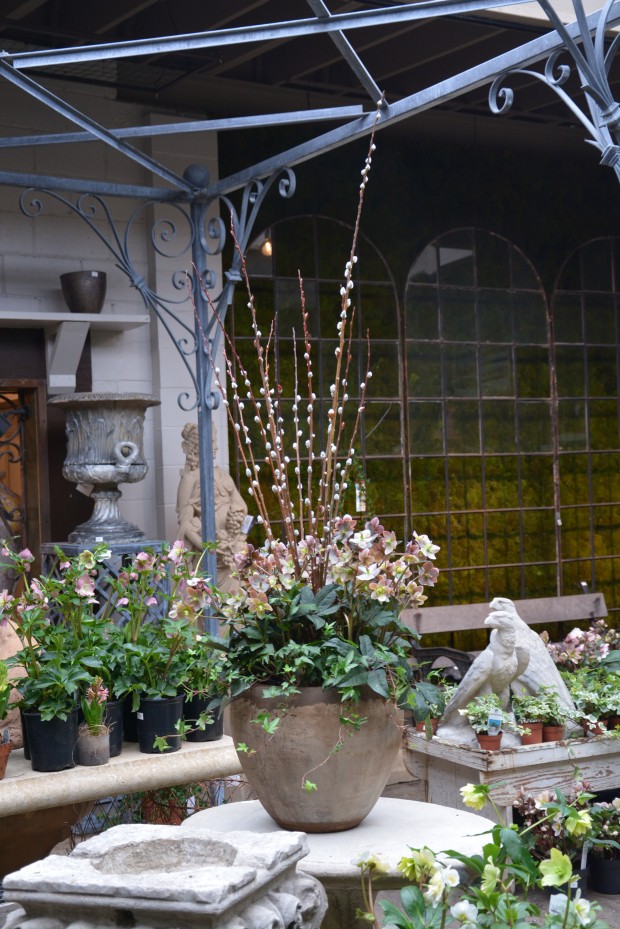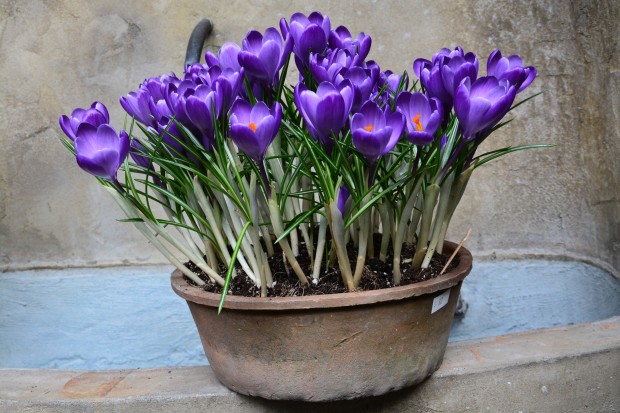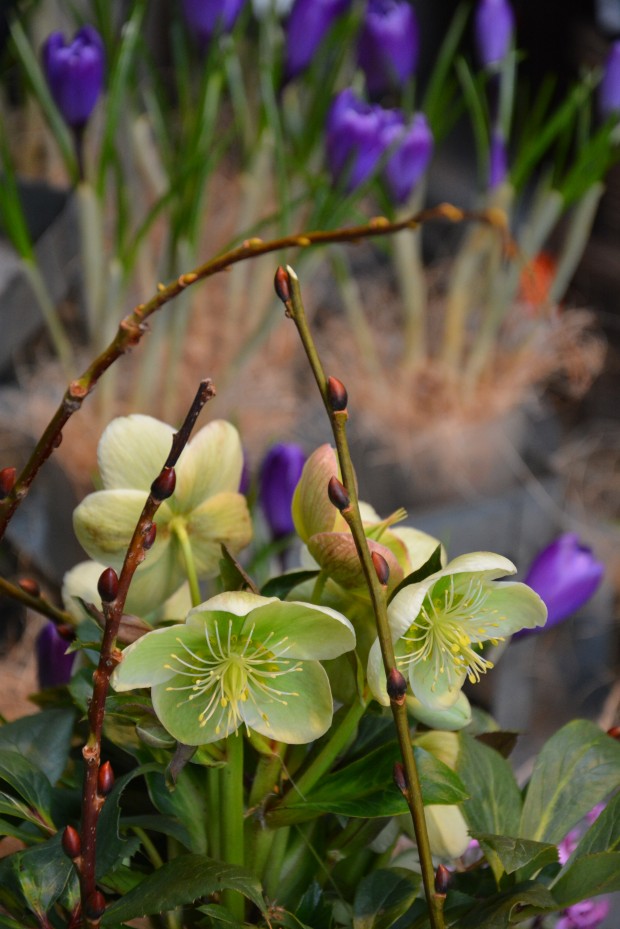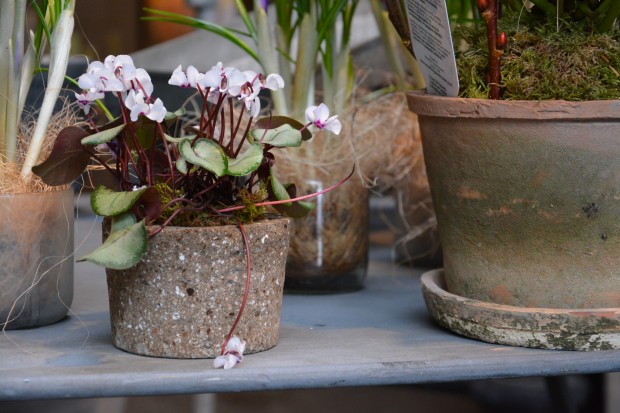 The signs of spring in my area are still few and far between. I do have a few crocus just coming into bloom now – in April, for pete’s sake. My garden cannot be cleaned up yet, as a layer of ice still covers most of it. I have winter pots still so frozen in place I cannot take them apart. But I have other options for spring. As in planting pots for spring. We are in the process of planting lots of them for the shop. Shortly we will be planting spring pots for clients. I do have a love for mossed containers. Nature represented in both the top and the bottom is a very good look. Lining moss baskets has always been about the art of patching. Florist’s moss comes packed in cases of pieces. Some moss pieces are big and thick. Rob calls these moss hides. Some pieces are thin and small. A wirework basket may need a number of pieces of moss, stitched together via a puzzle of overlapping pieces. Any natural material comes in all manner of natural shapes, sizes and thicknesses.
The signs of spring in my area are still few and far between. I do have a few crocus just coming into bloom now – in April, for pete’s sake. My garden cannot be cleaned up yet, as a layer of ice still covers most of it. I have winter pots still so frozen in place I cannot take them apart. But I have other options for spring. As in planting pots for spring. We are in the process of planting lots of them for the shop. Shortly we will be planting spring pots for clients. I do have a love for mossed containers. Nature represented in both the top and the bottom is a very good look. Lining moss baskets has always been about the art of patching. Florist’s moss comes packed in cases of pieces. Some moss pieces are big and thick. Rob calls these moss hides. Some pieces are thin and small. A wirework basket may need a number of pieces of moss, stitched together via a puzzle of overlapping pieces. Any natural material comes in all manner of natural shapes, sizes and thicknesses.
 One of our suppliers had the brilliant idea of attaching moss to a biodegradable backing. Don’t ask me how they do this-I have no clue. But I do know that mossing a wire basket just got a whole lot easier. For a round wirework container, Rob rolls the container in a natural arc across the moss mat. He marks that radius with a nursery marking pen. The marks describing the top of the container, and the bottom. That pair of lines create an arc. He cuts that arc big and wide- oversized.
One of our suppliers had the brilliant idea of attaching moss to a biodegradable backing. Don’t ask me how they do this-I have no clue. But I do know that mossing a wire basket just got a whole lot easier. For a round wirework container, Rob rolls the container in a natural arc across the moss mat. He marks that radius with a nursery marking pen. The marks describing the top of the container, and the bottom. That pair of lines create an arc. He cuts that arc big and wide- oversized.
 That arc derived from the top and bottom of the container means that the moss mat fits smoothly inside the basket. Of course there is a lot of fussing. Anything in the garden that means much to a gardener requires the work of a pair of hands. A pair of hands on a shovel, or a hose, or a rake. As for my gardening efforts today, I am putting my hands to planting containers for spring.
That arc derived from the top and bottom of the container means that the moss mat fits smoothly inside the basket. Of course there is a lot of fussing. Anything in the garden that means much to a gardener requires the work of a pair of hands. A pair of hands on a shovel, or a hose, or a rake. As for my gardening efforts today, I am putting my hands to planting containers for spring.
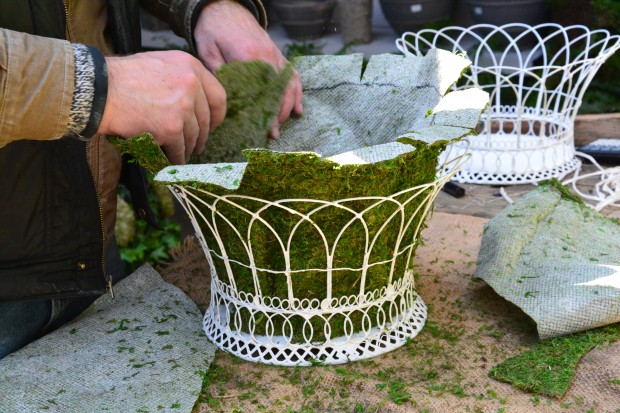 Not that I do as good a job as Rob does. He has infinite patience. He eases the moss mat into place.
Not that I do as good a job as Rob does. He has infinite patience. He eases the moss mat into place.
 The bottom of this wirework container is filled with drainage material. By a third. Container plantings require more drainage material than soil. Waterlogged plants never prosper, unless you plan to pot up bog plants. A seasonal pot planting does well with bark as drainage material. Making sure that water can drain from a container is essential.
The bottom of this wirework container is filled with drainage material. By a third. Container plantings require more drainage material than soil. Waterlogged plants never prosper, unless you plan to pot up bog plants. A seasonal pot planting does well with bark as drainage material. Making sure that water can drain from a container is essential.
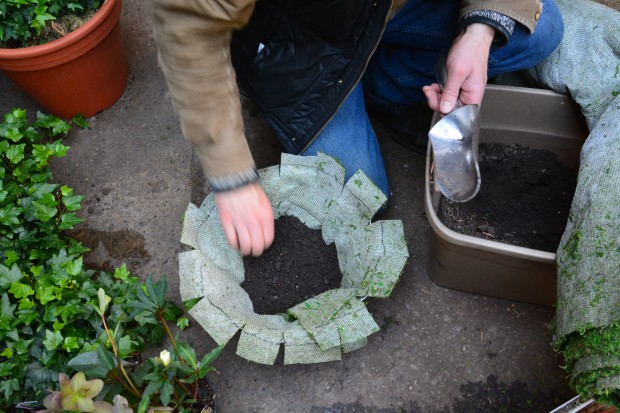 After the bark, the container is filled with soil. We use a soil mix that is custom blended for us. Lots of compost. A big dash of sand. And soil. We do not use peat based growers mix in our pots. Soilless mixes are perfect for professional growers who can manage the fertility levels and water to a tee. For gardeners, we recommend a soil based mix. We like dirt.
After the bark, the container is filled with soil. We use a soil mix that is custom blended for us. Lots of compost. A big dash of sand. And soil. We do not use peat based growers mix in our pots. Soilless mixes are perfect for professional growers who can manage the fertility levels and water to a tee. For gardeners, we recommend a soil based mix. We like dirt.
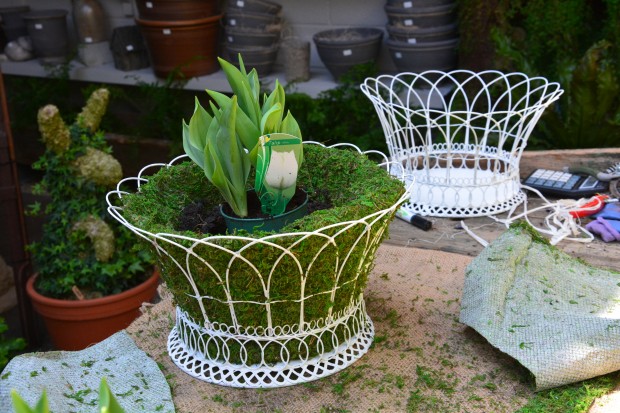 The upper side of the moss mat gets folded over. A rolled moss edge looks generously finished. That thickness contrasts beautifully with the thin wire that describes the shape of the container. That roll also helps to keep the soil right where it belongs-inside.
The upper side of the moss mat gets folded over. A rolled moss edge looks generously finished. That thickness contrasts beautifully with the thin wire that describes the shape of the container. That roll also helps to keep the soil right where it belongs-inside.
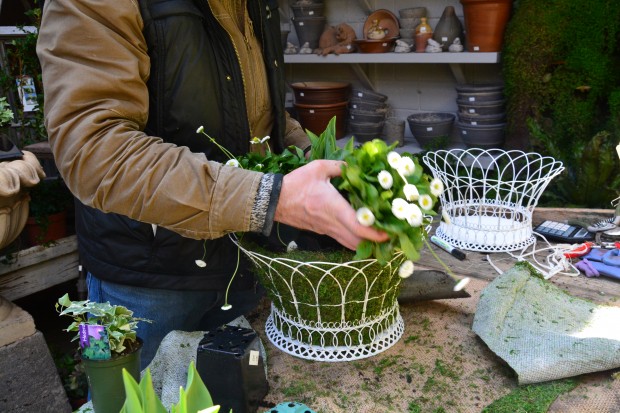 Once the wirework container is moss lined, it is time to plant the plants. For this pot, white tulips, white English daisies, and white variegated ivy.
Once the wirework container is moss lined, it is time to plant the plants. For this pot, white tulips, white English daisies, and white variegated ivy.
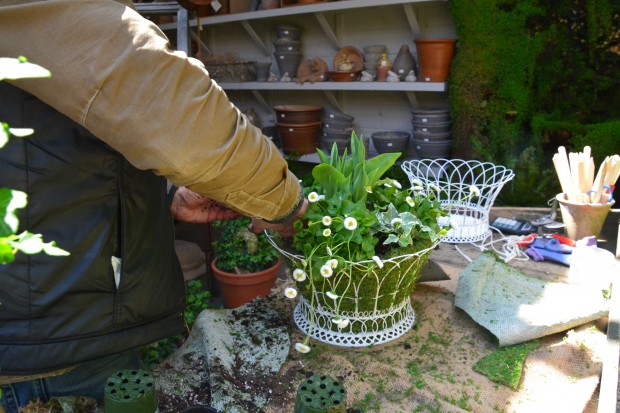 Planting a pot no doubt involves design. Color, texture, mass-and a vision about the mature shape of the planting. But planting a pot is also about that magical moment. An idea. The plants. The dirt. The act of planting.
Planting a pot no doubt involves design. Color, texture, mass-and a vision about the mature shape of the planting. But planting a pot is also about that magical moment. An idea. The plants. The dirt. The act of planting.
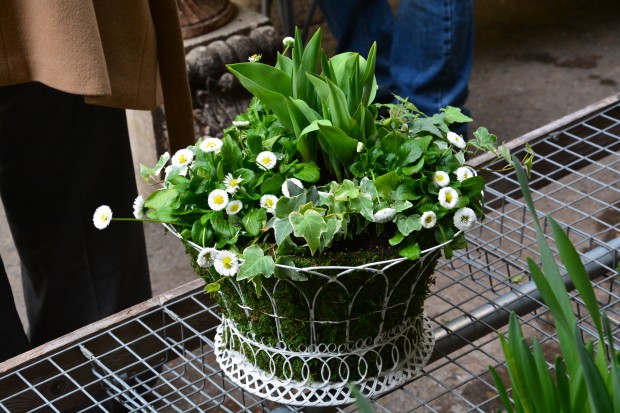 This mossed wirework basket-an expression of spring. An expression of spring? I expect both nature and every gardener to be making news, soon.
This mossed wirework basket-an expression of spring. An expression of spring? I expect both nature and every gardener to be making news, soon.
